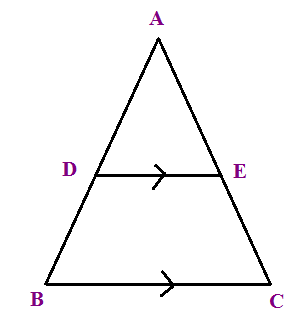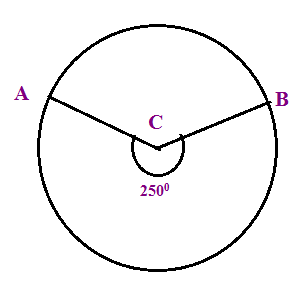MATH PRACTICE TEST FOR 8TH GRADE ONLINE
Subscribe to our ▶️ YouTube channel 🔴 for the latest videos, updates, and tips.
Question 1 :
Find the maximum value of quadratic function
n 2 - 6n - 55
(A) -64 (B) 55 (C) -48
Solution :
We have a formula to find the maximum value of a quadratic equation.
x-coordinate of maximum value = -b/2a
a = 1, b = -6 and c = -55
-b/2a = - (-6)/2(1)
= 6/2
= 3
Maximum value = f(3)
= (3)2 - 6(3) - 55
= 9 - 18 - 55
= 9 - 73
= -64
Hence the maximum value is -64.
Question 2 :
Find a rational number between 3/4 and 4/5
(A) 21/40 (B) 31/40 (C) 41/40
Solution :
Let a = 3/4 and b = 4/5
Formula to find rational number between two rational numbers
= (1/2)(a + b)
= (1/2) (3/4 + 4/5)
L.C.M of 4 and 5 is 20.
= (1/2) (15/20 + 16/20)
= (1/2) [(15 + 16)/20]
= (1/2) (31/20)
= 31/40
Hence the required rational number between the given rational numbers is 31/40.
Question 3 :
Simplify (1 - (1/2)) + (3/4 - 1/4)
(A) 1 (B) 0 (C) 2
Solution :
= (1 - (1/2)) + (3/4 - 1/4)
= (2-1)/2 + [(3 - 1)/4]
= 1/2 + [(3 - 1)/4]
= (1/2) + (2/4)
= (2 + 2)/4
= 1
Hence the answer is 1.
Question 4 :
Cube root of 125/256
(A) 5/4 (B) 25/4 (C) 5/6
Solution :
∛(125/256)
To find cube root of the given fraction, we have to decompose both numerator and denominators into prime factors.
= ∛(5⋅ 5 ⋅ 5) / (2 ⋅ 2 ⋅ 2 ⋅ 3 ⋅ 3 ⋅ 3)
We may group them as triples.
= 5/6
Question 5 :
Find the smallest number by which 81 must be divided to obtain a perfect cube.
(A) 2 (B) 3 (C) 4
|
Solution : To find the number required to divide 81 such that the quotient is a perfect cube, we have to decompose 81 into prime factors. = ∛81 = ∛(3⋅3⋅3⋅3) When we group the prime factors inside the cube root as triples, we left over with 3. That is 3. So, 3 is the smallest number required to divide 81 so that the quotient is a perfect cube. |
 |
Question 6 :
Find the fifth term of the sequence whose second term is 8 and third term is 14.
Solution :
Second term = 8
Third term = 14
General term of the arithmetic sequence :
a n = a + (n - 1) d
Second term (a + d) = 8 ---(1)
Third term (a + 2d) = 14 ----(2)
(1) - (2)
a + d - (a + 2d) = 8 - 14
-d = -6
d = 6
By applying the value of d in (1), we get the value of a
a + 6 = 8
a = 8 - 6
a = 2
Fifth term = a + 4d
= 2 + 4(6)
= 2 + 24
= 26
So, the fifth term is 26.
Question 7 :
Find AC when AB = 15 cm, AD = 10 cm, AE = 8 cm

(A) 12 cm (B) 10 cm (C) 13 cm
Solution :
AB = AD + DB
15 = 10 + DB
DB = 15 - 10
DB = 5
10/5 = 8/EC
EC = 8/2 = 4
AC = AE + EC
AC = 8 + 4 = 12
So, length of AC is 12 cm.
Question 8 :
Angle ABC measures 250°, find the measure of minor of arc AC.

(A) 150° (B) 110° (C) 140°
Solution :
Measure of minor arc = 360 - 250
= 110°
Question 9 :
Find the mean of all odd numbers between 80 and 88.
(A) 84 (B) 30 (C) 62
Solution :
Odd numbers between 80 and 88 are
81, 83, 85, 87
Mean of above numbers = (81 + 83 + 85 + 87) / 4
= 336/4
= 84
Question 10 :
The number of times a particular observation occur in a data is called its __________
(A) Frequency (B) Mean (C) Median
Solution :
The number of times a particular observation occur in a data is called its frequency.

Answers
|
(1) 15 (2) 260 days (3) 279 km (4) 70 meter (5) 45° and 60° |
(6) 12% (7) 12 cm (8) 110° (9) 84 (10) Frequency |
Subscribe to our ▶️ YouTube channel 🔴 for the latest videos, updates, and tips.
Kindly mail your feedback to v4formath@gmail.com
We always appreciate your feedback.
About Us | Contact Us | Privacy Policy
©All rights reserved. onlinemath4all.com

Recent Articles
-
10 Hard SAT Math Questions (Part - 43)
Jan 04, 26 01:38 AM
10 Hard SAT Math Questions (Part - 43) -
90 Degree Clockwise Rotation
Jan 01, 26 06:58 AM
90 Degree Clockwise Rotation - Rule - Examples with step by step explanation -
US Common Core K-12 Curriculum Algebra Solving Systems of Equations
Jan 01, 26 04:51 AM
US Common Core K-12 Curriculum - Algebra : Solving Systems of Linear Equations
